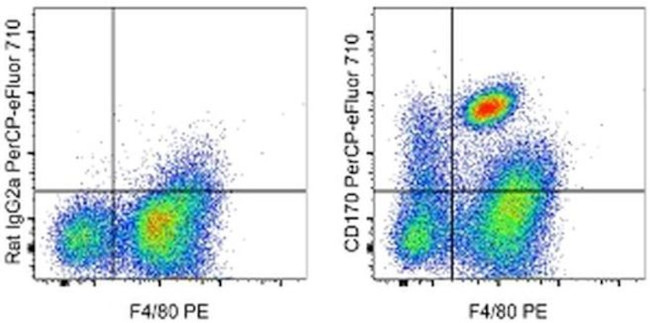Search Thermo Fisher Scientific
Invitrogen
CD170 (Siglec F) Monoclonal Antibody (1RNM44N), PerCP-eFluor™ 710, eBioscience™
FIGURE: 1 / 9
CD170 (Siglec F) Antibody (46-1702-82) in Flow

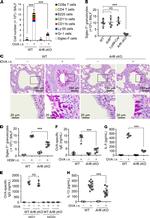
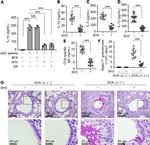
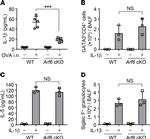
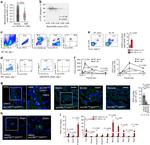

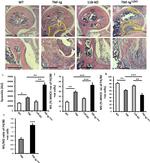
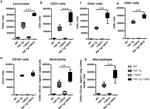
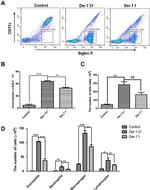
Product Details
46-1702-82
Species Reactivity
Published species
Host/Isotype
Recommended Isotype Control
Class
Type
Clone
Conjugate
Excitation/Emission Max
Form
Concentration
Purification
Storage buffer
Contains
Storage conditions
Shipping conditions
RRID
Product Specific Information
Description: This 1RNM44N monoclonal antibody recognizes mouse CD170, also known as Siglec F. Siglec F is a cell surface lectin belonging to the Ig superfamily that binds glycoconjugates containing sialic acids that are commonly found on various cell types. The cytoplasmic domain of Siglec F contains an immunoreceptor tyrosine-based inhibitory motif (ITIM) that initiates intracellular signaling upon ligand binding. Siglec F is expressed mostly on eosinophils and alveolar macrophages and lower levels of this receptor have also been reported on immature myelomonocytic cells. mouse Siglec F is a functional ortholog of human Siglec 8, however, unlike human Siglec 8, mouse Siglec F is not expressed on mast cells.
This 1RNM44N antibody will recognize a formaldehyde-fixed epitope.
Applications Reported: This 1RNM44N antibody has been reported for use in flow cytometric analysis.
Applications Tested: This 1RNM44N antibody has been tested by flow cytometric analysis of mouse thioglycolate-elicited peritoneal exudate cells. This can be used at less than or equal to 0.125 µg per test. A test is defined as the amount (µg) of antibody that will stain a cell sample in a final volume of 100 µL. Cell number should be determined empirically but can range from 10^5 to 10^8 cells/test. It is recommended that the antibody be carefully titrated for optimal performance in the assay of interest.
PerCP-eFluor® 710 emits at 710 nm and is excited with the blue laser (488 nm); it can be used in place of PerCP-Cyanine5.5. We recommend using a 710/50 bandpass filter, however, the 695/40 bandpass filter is an acceptable alternative. Please make sure that your instrument is capable of detecting this fluorochrome.
Light sensitivity: This tandem dye is sensitive to photo-induced oxidation. Please protect this vial and stained samples from light.
Fixation: Samples can be stored in IC Fixation Buffer (Product # 00-8222) (100 µL of cell sample + 100 µL of IC Fixation Buffer) or 1-step Fix/Lyse Solution (Product # 00-5333) for up to 3 days in the dark at 4°C with minimal impact on brightness and FRET efficiency/compensation. Some generalizations regarding fluorophore performance after fixation can be made, but clone specific performance should be determined empirically.
Excitation: 488 nm; Emission: 710 nm; Laser: Blue Laser.
Filtration: 0.2 µm post-manufacturing filtered.
Target Information
SIGLEC5 is a putative adhesion molecule that mediates sialic-acid dependent binding to cells. This protein binds equally to alpha2,3-linked and alpha2,6-linked sialic acid. The sialic acid recognition site may be masked by cis interactions with sialic acids on the same cell surface. This molecule is expressed by monocytic/myeloid lineage cells. SIGLEC5 is found at high levels in peripheral blood leukocytes, spleen, bone marrow and at lower levels in lymph node, lung, appendix, placenta, pancreas and thymus. It is expressed by monocytes and neutrophils but absent from leukemic cell lines representing early stages of myelomonocytic differentiation.
For Research Use Only. Not for use in diagnostic procedures. Not for resale without express authorization.
How to use the Panel Builder
Watch the video to learn how to use the Invitrogen Flow Cytometry Panel Builder to build your next flow cytometry panel in 5 easy steps.
Bioinformatics
Protein Aliases: CD170; sialic acid binding Ig-like lectin 5; Sialic acid-binding Ig-like lectin 5; Sialic acid-binding Ig-like lectin F; sialic acid-binding lectin Siglec-F; Siglec; Siglec-5; Siglec-F
Gene Aliases: mSiglec-F; Siglec5; Siglecf
UniProt ID: (Mouse) Q920G3
Entrez Gene ID: (Mouse) 233186

Performance Guarantee
If an Invitrogen™ antibody doesn't perform as described on our website or datasheet,we'll replace the product at no cost to you, or provide you with a credit for a future purchase.*
Learn more
We're here to help
Get expert recommendations for common problems or connect directly with an on staff expert for technical assistance related to applications, equipment and general product use.
Contact tech support
